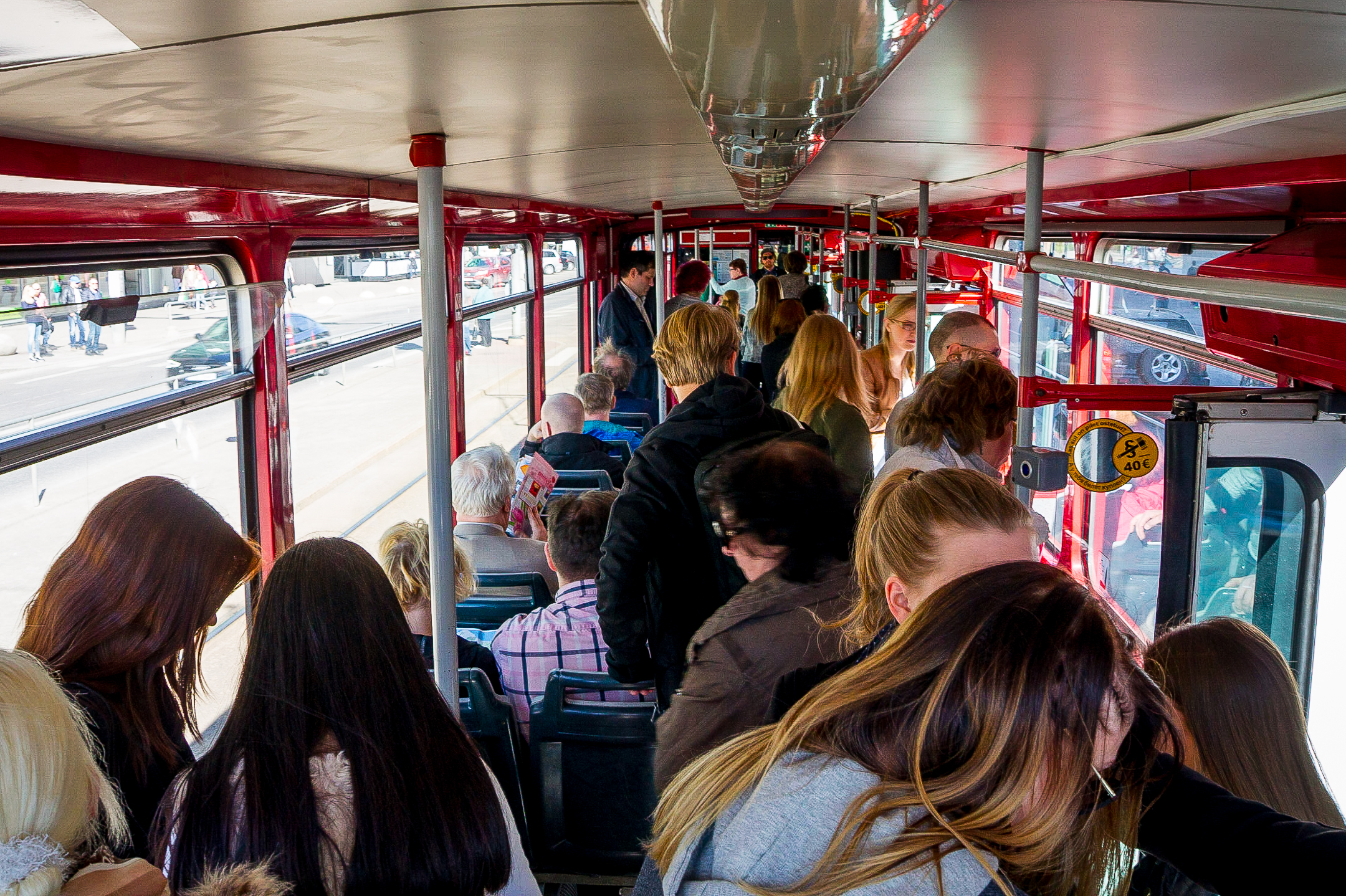
© Wojciech Kębłowski
Fare-free public transport
Work Package 2 (WP2) centres on the integration of fare systems and fare-free public transport (FFPT) initiatives. The work package builds on insights from the case study of Tallinn, where public transport fares were abolished in 2013. While all registered city residents in Tallinn can travel for free on public transport, residents in the urban periphery and the wider urban region face various challenges. The uncoordinated and unintegrated mobility services leave commuters with fewer incentives to use public transport and a high reliance on private motorised vehicles. Equitable and sustainable mobility solutions as well as integrated pricing and ticketing systems remain a challenge for the city region. As part of Work Package 2, a team of researchers examines the current challenges for public transport in the face of environmental, technological, economic and social disruptions, taking into account the geographic differences between centre and periphery. The aim of WP2 is to asses the integration of ticketing systems as well as FFPT in different territorial policies, organisational forms (e.g. flexible public transport services or mobility hubs), innovative mobility services and digitalisation. Within this WP2, we assess the resilience and fairness of FFPT and evaluate alternative solutions for integrating fares and ticketing systems to create resilient, fair and equitable public transport solutions that enable the use of public transport in different geographical and demographic settings.
The research initiates with desk research (including academic literature and policy analysis), expert interviews and workshops with key stakeholders. More importantly, the co-design and participation of different groups is seen as key to inclusive transport planning. For this reason, the main findings will be obtained through qualitative studies based on user interviews and a joint experiment with commuters from the Saue municipality in the Tallinn city region. To carry out the research activities and promote the potential outcomes, the researchers work closely with the Tallinn City Council, Saue Municipality and local mobility providers. As a way to apply the insights of the experiment beyond the Tallinn urban region, the research aims to establish best practice examples on integrating fare systems and ticketing strategies to enable just and resilient public transport systems. WP2 further incorporates experiences of full and partial FFPT implemented in Hasselt in FUR-ULL, as well as the practices of cooperation within the FUR-ULL to identify potentials for mutual capacity building. In addition, partial FFPT is explored as a form of inclusive planning in STO-ULL and in OSL-ULL.
Moreover, WP2 coordinates the Tallinn Urban Region Living Lab (TAL-ULL), which enables other researchers as well as stakeholders to learn from best practices on FFPT as well as methodological approaches to conducting case studies and test runs in the region.
Micro-mobility and public transport
WP3 focuses on micromobility, drawing on the experiences surrounding the planning and provision of different forms of emerging micromobilities and how (well) they integrate into the public transport system(s) and into their host urban environment(s). In this WP, researchers collaborate with the regional public transport authorities and city authorities as well as micromobility providers. WP3 coordinates the STO-ULL, which allows other WPs to draw on inclusive planning approaches and participatory processes in the integration of micromobility into existing PT systems as well as urban environments. Other elements of the project such as FUR-ULL, OSL-ULL and Tallinn UR can draw on and contribute to this work through the engagement of micromobility actors and investigations surrounding how micromobility solutions can complement existing public transport and built environment infrastructures. Close collaboration with OSL-ULL is expected with regard to their experience with micromobilities. Equally, another work package (WP5) will focus on how transit-oriented developments and stations positively interacts with micromobility planning (concerning not only questions of parking but also extension of PT reach beyond walking distance).
Flexible Public Transport in low-density regions
Transit Oriented Development
WP5 focuses on Transit-Oriented Development (TOD) inspired densification around public transport (PT) nodes, drawing on empirical evidence from greater Oslo, Norway. It will investigate low energy mobility potentials by addressing how ongoing developments affect accessibility and attractiveness of traveling by PT, foot, bicycle, flexible on demand solutions, and micromobilities, and provide synergies between these transport alternatives. WP5 will also address the inclusiveness of current strategies on densification by measuring its effects on housing prices and population composition (including gentrification and the potential displacement of disadvantaged groups), and by scrutinising its effects on the lived everyday mobilities, mobility inequalities and mobility needs of different population categories. In collaboration with regional transport and planning authorities, WP5 aims to co-create a robust and resilient design for densification around PT nodes that is both inclusive and forward looking. The WP will coordinate the Oslo Urban Region Living Lab (OSL-ULL) that focuses on creating inclusive and futuristic transit nodes in Oslo and its functional region. Regional and municipal plans for Oslo and the surrounding county already centre around TOD (Knutepunkt Utvikling) making this as an excellent case for the project. Centralisation on micromobility in STO-ULL gives a particular edge on intersecting such forms of mobility with TOD. At the same time, all ULLs involve questions about TOD planning.


